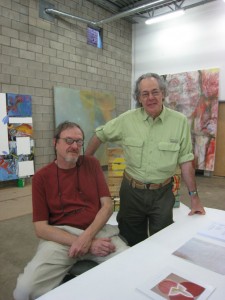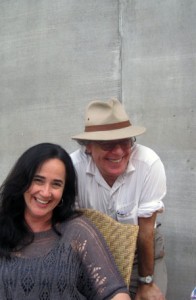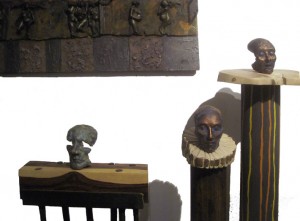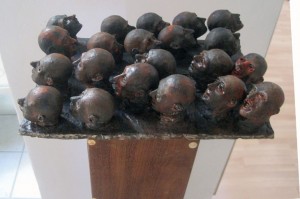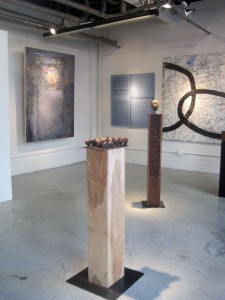I’ve written much regarding the art of Tom Wudl but nothing about what it was like to be his student. What prompted me to correct this omission? I began reflecting that, in spite of having had many art teachers over time– most quite good, some remarkable– not one had provided that crucial set of instructions vital for creating art until I met up with Tom Wudl.
My early art instruction provided few technical skills but plenty of vague and ethereal suggestions. This deficiency had to be made up later in life by a cadre of instructors such as anatomy from Ray Bustos, head and figure drawing from Glenn Vilppu, value and color from Nicole Duet, and many more; you get the point.
At first, under the mistaken impression that more art blather was forthcoming, I had planned to spend only a month with Wudl but to my surprise that turned into a stay of several years. What made Wudl’s instruction such a different experience? For me at least, they were totally unlike a classroom situation and more like an apprenticeship to an established working artist.
Certainly Wudl lectured students about art from time to time, usually around the lunch table, but learning from him was all about individualized instruction. Those who took advantage of watching him create his own art had the added opportunity of experiencing a sort of osmotic “monkey see, monkey do” modeling of an active artist’s work habits.
During the first few months we were given a succession of random assignments designed to provide Wudl with an idea of where each student was and what direction he or she might head towards. This pays off big time especially when he throws curve ball assignments that force students to explore new visual territory, to force us out of a rut or our comfort zone.
With time, as the student artist started the process of metamorphosis under his direction, what lessons were learned? One of the most important was also one of the most difficult, that is, to understand that the removal of elements in a work is every bit as relevant as what an artist adds, irrespective of how long it took to put things down. To be able to remove is not intuitive but, after all, creation is an editing process.
With Wudl one learns that creative editing comes from listening to your “gut” instincts, if you feel something just doesn’t look right then change it. You also realize that instinct comes from continuously observing works of art, that it is an informed reflex derived from what Wudl termed “a visual literacy.”
By watching Wudl create his own work, the student observes that when he’s not sure what direction to take with a piece, it gets set aside in plain sight until a “eureka” moment arrives on the next day, week, month, or year; it is not something an artist can rush.
Wudl makes one realize that each step and each stroke in the production of a piece informs subsequent ones. This is no small lesson since this process allows the artist to remain open to all possibilities, even when departing from original intentions.
Another hurdle is recognizing clutter or clashing elements in one’s work, then simplifying and unifying elements. In addition Wudl is quick to point out when work gets gimmicky or starts to pander.
A particularly fastidious artist, Wudl instills a respect for serious craftsmanship in his students. The student artist comes to realize that even random and spontaneous art need not be sloppily executed or slap-dashed together. Observing his reverence and respect for his calling becomes contagious. Certainly one learns many more lessons, but these were the indispensable ones.
Last month I received a surprise e-mail from Wudl regarding three of my bronze sculptures recently exhibited at the Gloria Delson Contemporary Arts Gallery that read “work looks really good. Heart felt! …!” That was great kudos coming from an artist who sets the bar high and whose missives often consist of a single-syllable word. This affirmative pat-on-the-head e-mail is an acknowledgment of his lessons well learned and a long-last understanding of what constitutes the creation of art– no small tribute to any instructor.

